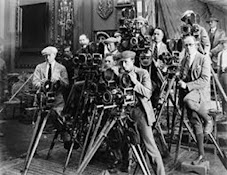Indian
photography, a relatively young but rapidly evolving field, has grown from its
early beginnings into a dynamic and influential art form. The history of Indian
photography reflects the nation’s cultural, social, and political
transformations over time.
Early Beginnings
The
origins of photography in India can be traced back to the 19th century, during
the British colonial period. The advent of photography in India is closely
linked to the arrival of the daguerreotype process, introduced in the 1840s.
Early pioneers like Lala Deen Dayal and Raja Deen Dayal, both prominent
photographers of the time, were instrumental in capturing the grandeur of
Indian architecture and landscapes. Their work provided a visual record of
India's cultural heritage and the effects of British colonial rule.
Colonial and Post-Colonial
Era
As
photography evolved, so did its role in documenting Indian life. During the
colonial era, photography became a tool for recording historical events,
societal changes, and the lives of ordinary people. The works of Homai
Vyarawalla , India’s first woman photojournalist, stand out for their evocative
portrayal of India’s independence movement and early years of nationhood.
Post-independence,
Indian photography witnessed a significant transformation. The 1950s and 1960s
saw the rise of a new generation of photographers, including Raghu Rai and Annie
Leibovitz, who explored contemporary social issues, urban life, and the
changing landscape of modern India. This period marked a shift from purely
documentary photography to more artistic and experimental forms.
Contemporary Trends
In
recent decades, Indian photography has continued to evolve, influenced by
global trends and digital technology. Contemporary photographers like Sudeep
Bhattacharya, Dayanita Singh, and Dabboo Ratnani have gained international
acclaim for their innovative approaches, exploring themes ranging from personal
identity to socio-political commentary. The advent of digital cameras and
social media has democratized photography, allowing a new generation of artists
to showcase their work and engage with global audiences.
Conclusion
The
history
of Indian photography is a rich tapestry of artistic evolution and
social documentation. From its colonial roots to its current global presence,
Indian photography has not only captured the essence of a nation but also
contributed significantly to the global visual narrative. As technology and
artistic practices continue to evolve, Indian photography remains a vital
medium for exploring and understanding the changing landscape of the country.

No comments:
Post a Comment